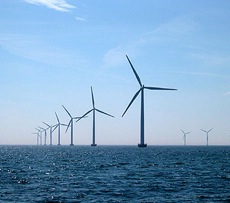Google makes a billion-dollar bet on offshore wind–but not on this coast.
When Google announced that it was taking a nearly 40% stake in a $5 billion underwater transmission line to serve offshore wind farms that haven’t been built, nobody even seemed to flinch. Such is the effect of having the Google imprimatur on renewable energy projects.

According to reports, the cable would run for 350 miles, about 20 miles off the Atlantic coast, connecting yet-to-be-built wind energy turbines to the mainland and to each other. It would not connect the only offshore wind farm to so far win approval from the federal Department of the Interior, the long-contested Cape Wind project off Massachusetts.
While confidence apparently runs high for wind development along the East Coast, hopes for similar offshore projects in California are more tempered. In an interview for an upcoming story for KQED’s 33 x 20 series, Ryan Wiser, who studies wind energy at Lawrence Berkeley National Lab, described the prospects for offshore development along California’s coast as “low.”
“We have deep, deep water out there,” said Riser, who co-authored a recent report on wind development across the US, points to the engineering challenges off the Pacific coast and the relative costs involved. “An offshore wind project costs roughly twice as much as an onshore project,” said Wiser. “So if you have available onshore resources, it’s not clear to me why anyone would go offshore, as long as the onshore resource is extractable from a siting, permitting and transmission perspective.”
